If you are looking for the most profitable vegetables to grow either to sell or for your consumption, then this list of high value vegetables will come in handy.
Besides, space is becoming quite a big deal, especially for those of us living in urban apartments.
Therefore, choosing crops that take as little space as possible and have a higher dollar value makes sense.
The trick is to grow the most expensive vegetables and buy the ones that are cheap to make sure that you save more.
For example, white asparagus (Hop shoots) is one of the most expensive vegetables in the world. Given this fact, buying them won't make sense if you can grow them.
In today's article, I will discuss the 33 most profitable and high-value vegetables that will have a high return on your investment.
The list is arranged based on the overall score, starting with the least (score of 1/10) and moving to the most valuable crop (score of 10/10).
Just to put everything into perspective, the list is based on four main factors;
- Total yield per square foot.
- Average monetary value per pound.
- Length of time in the garden.
- Some are the most expensive vegetables.
33 Most Expensive Vegetables That Are Profitable to Grow at Home
33. Pumpkins (overall score 1.9)
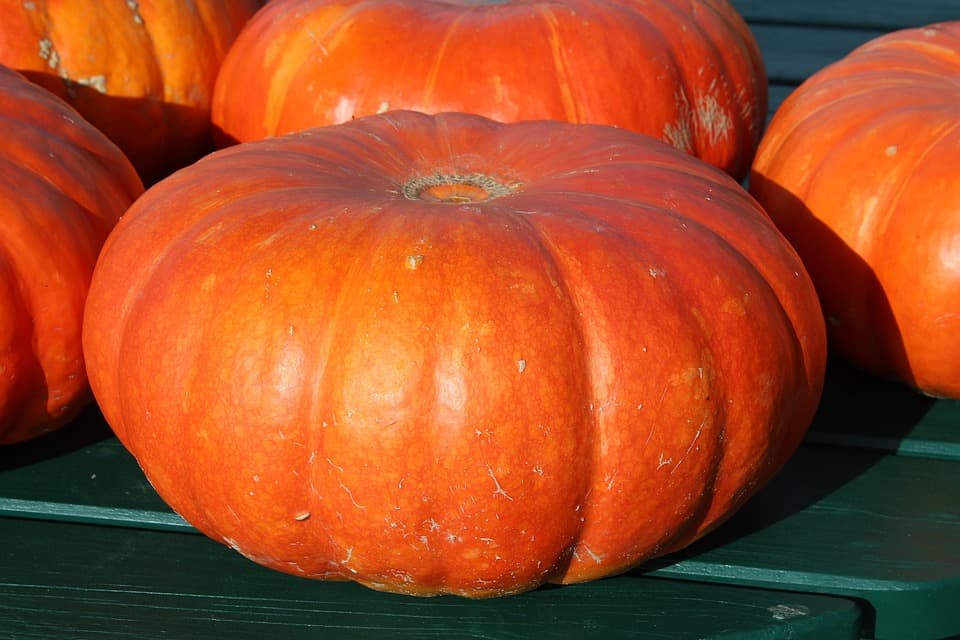
Space utilization: Production per square foot is relatively low, with approximately ten pumpkins per 10-foot row. Each 10 ft row can only accommodate three plants.
Monetary value: Pumpkins, although not vegetables per se, have a relatively low economic value.
Nutrition: It is a superb source of fiber, vitamin A, and calories, together with beta-carotene, an antioxidant that, according to the National Cancer Institute, may play a role in cancer prevention. (Source: huffingtonpost.com)
32. Winter squash (Overall score 3.8)
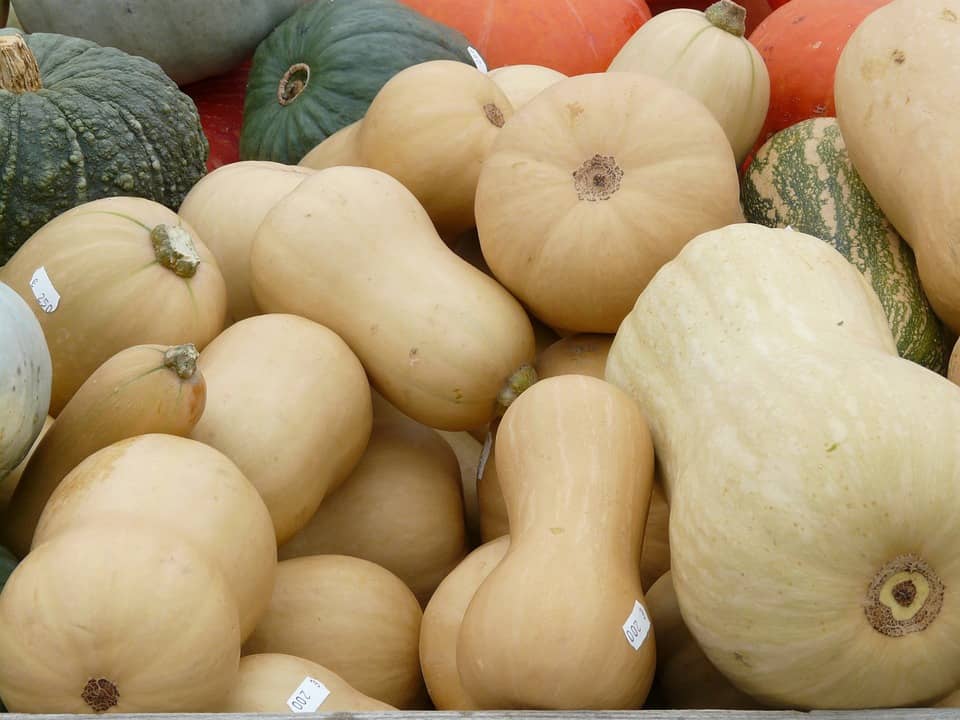
Space utilization: Production per square foot is medium with 20-30lbs of produce in a ten ft. A row that contains only two plants.
Monetary value: Squashes have a relatively small value compared to other vegetables on this list.
Nutrition: This squash provides adequate dietary fiber and significant amounts of vitamin B6, potassium, and folate. The winter squash is also rich in phytonutrients and antioxidants.
Furthermore, the squash contains essential nutrient components such as carotenoids, high levels of beta-carotene, and vitamin C. (Source: wholeliving.com)
31. Melons (Overall score 3.8)
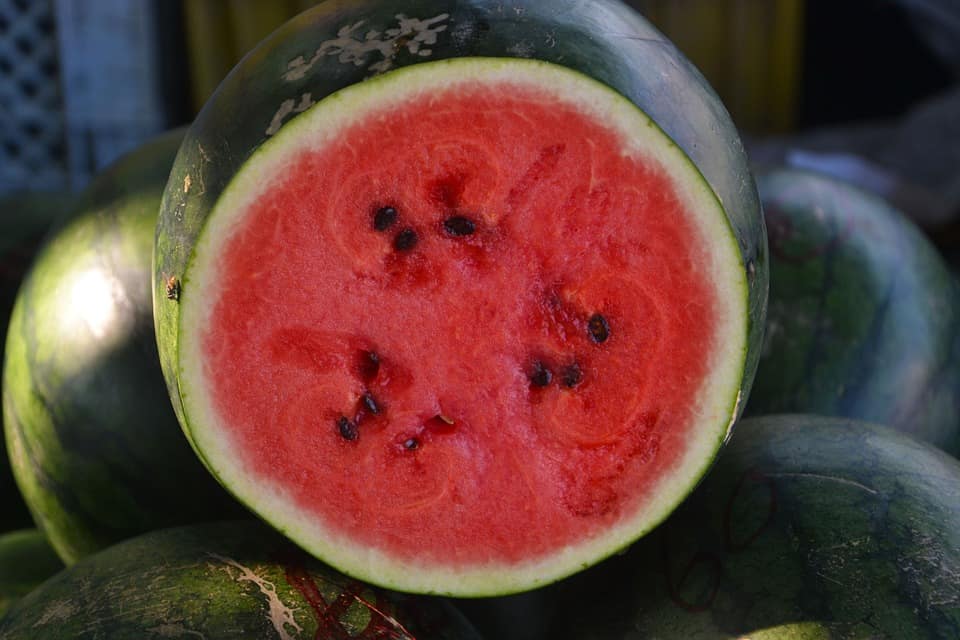
Space utilization: Relatively low production per square foot. On average, a 10-foot row will yield 10-15 fruits from 3 plants.
Monetary Value: The economic value is relatively small for the melons.
Nutrition: Melons are also known as cantaloupe or muskmelon. This veggie is believed to remove acne and help prevent wrinkles. Melon is powered with a high calorie.
For example, one cup of diced fruit contains about 50 calories.
Besides these calories, this veggie contains vitamins A and C and supplies more beta-carotene than any other fruit or vegetable. (source: greatest.com).
30. Celery (Overall score 4.3)
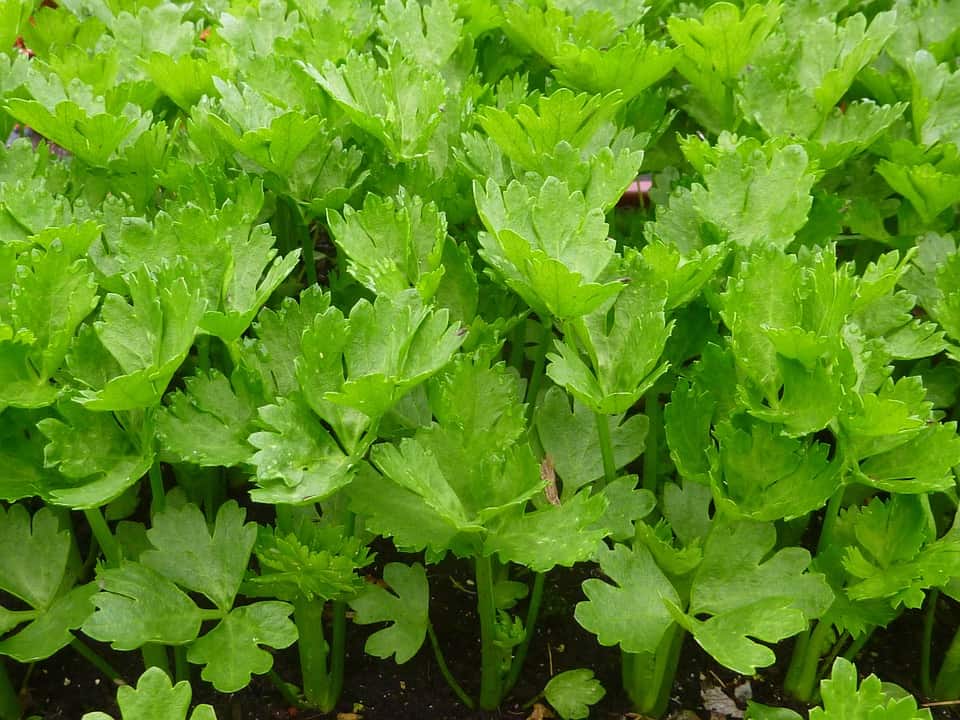
Space utilization: A 10 ft. Row takes 20 plants to fill up. The yield expected per square foot is medium, about 15lbs
Monetary value: You can expect a medium return on investment from growing celery.
Nutrition: One large stalk of celery contains only ten calories. Moreover, celery contains essential oils and minerals such as magnesium and small amounts of sodium.
Many vitamins are available in celery, the most prominent one being vitamin A. Studies have revealed that chewing celery stalk could amp up your sex life! (Source: care2.com)
29. Brussels sprouts (Overall score 4.3)
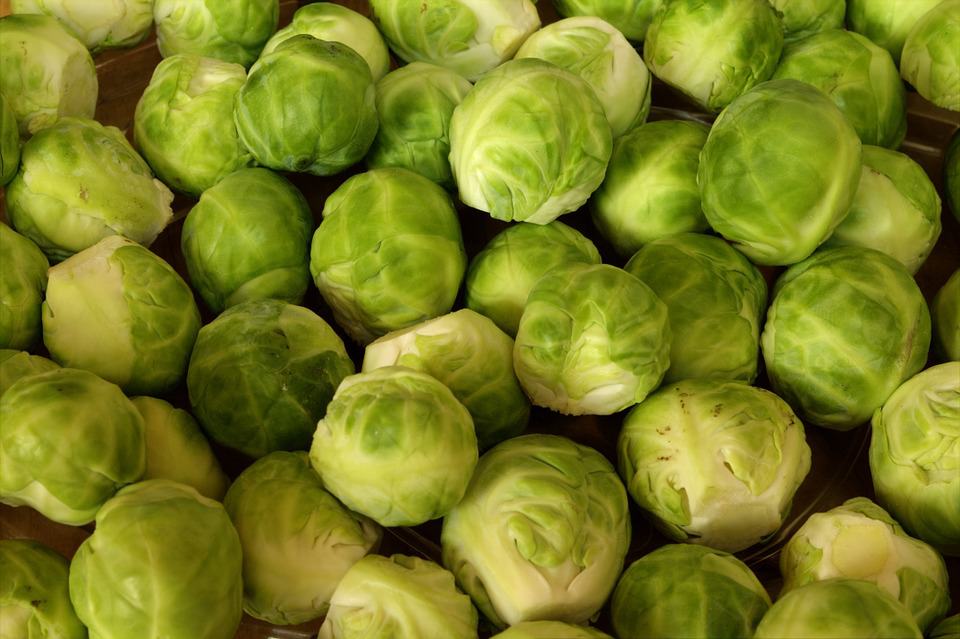
Space utilization: A 10 ft. Row accommodates ten plants on average, giving small production per square foot of about 6-8lbs.
Monetary value: Brussels sprouts have a relatively high monetary value.
Nutrition: This vegetable is an excellent option if you are a vegetarian. This is because they make a complete protein when combined with whole grains.
Besides that, Brussels is low in sodium and fat. Still, it contains tons of vitamins A, C, and K (believed to be more than that of an orange) and B6, fiber, iron, selenium, folate, calcium, and potassium. (Source: treehugger.com)
28: Peas, English (Overall score 5.2)
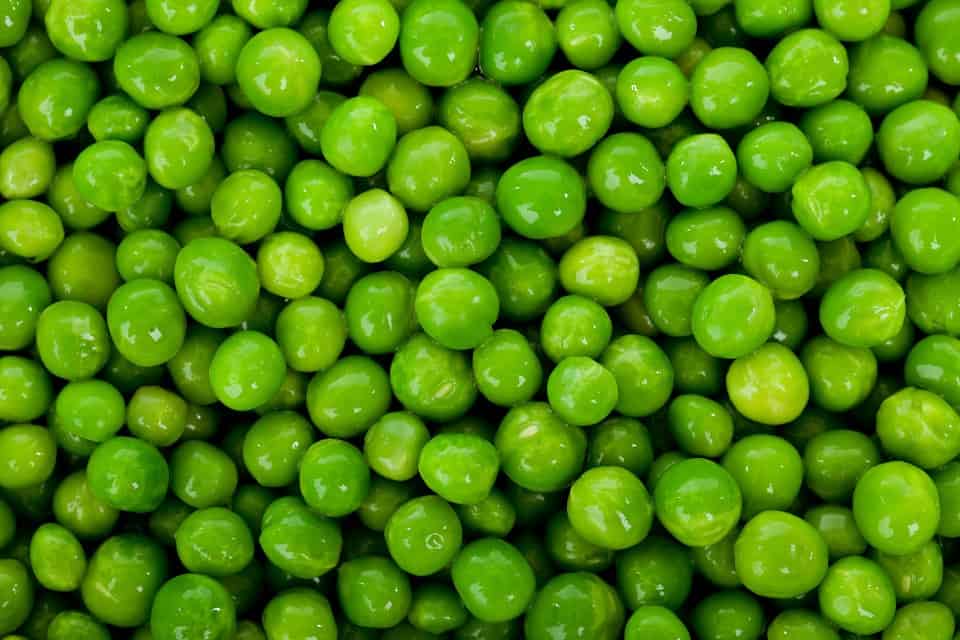
Space utilization: Production per square foot is medium, approximately 10-12lbs. This plant is ideal even in limited areas. For instance, a ten-foot row can grow 60-100 plants for our benchmark!
Monetary value: The peas have a relatively high market value.
Nutrition: Peas are green legumes loaded with vitamins A, B1, B6, K, and C. These super vegetables are high in fiber and low in fat, and contain no cholesterol. Furthermore, they are a good source of plant proteins. (Source: webmd.com)
27. Eggplant (Overall score 5.3)

Space utilization: Low production per square foot of about 15 eggplants. In every ten ft. row, you can plant five plants.
Monetary value: You can expect a high market value for the eggplant.
Nutrition: Also known as Aubergines, eggplant is an excellent source of dietary fiber, vitamins B1, B6, and potassium. Besides, it is high in copper, manganese, and magnesium.
Eggplants are also very rich in antioxidants such as Nasunin, which is found in aubergine skin. The Nasunin is responsible for the purple color found in aubergines. (Source: bbcgoodfood.com)
Learn how to get rid of flea beetles on eggplant naturally so that they maintain their flavor and nutritional value.
26. Cauliflower (Overall score 5.3)
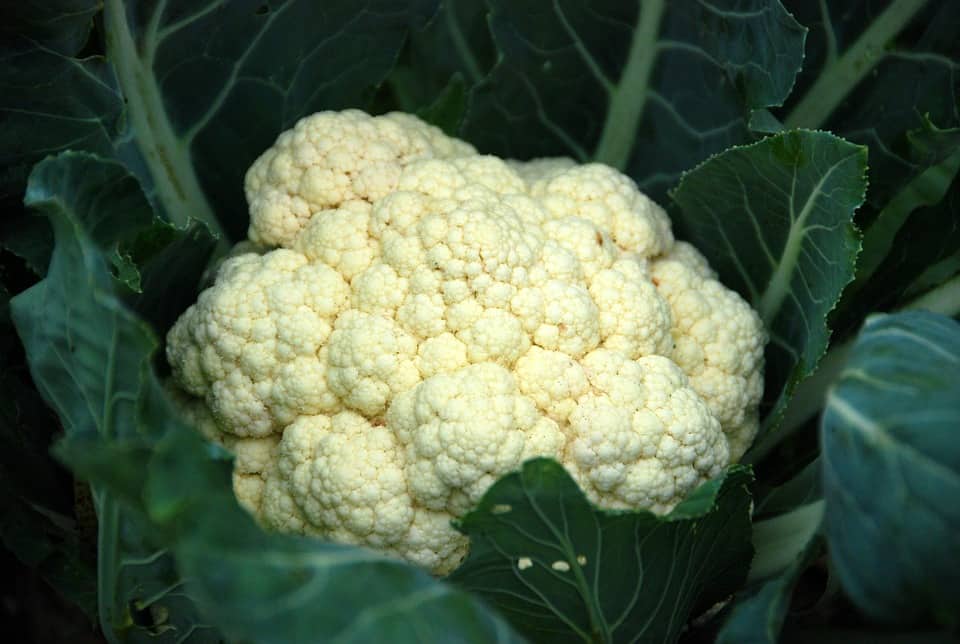
Space utilization: Cauliflower has a medium yield per square area. A 10-foot row takes about nine plants and produces between 8 and 10 lbs per square foot.
Monetary value: Even though the yield is medium, this veggie has a relatively high monetary value, which makes it profitable to grow.
Nutrition: Cauliflower is low in calories—approximately three calories, equivalent to 14KJ. Vegetables are low in both fats and cholesterol but high in dietary fiber. The cauliflower contains essential minerals such as calcium, potassium, and proteins. (Source: calorieking.com)
25. Kale (Overall score 5.6)
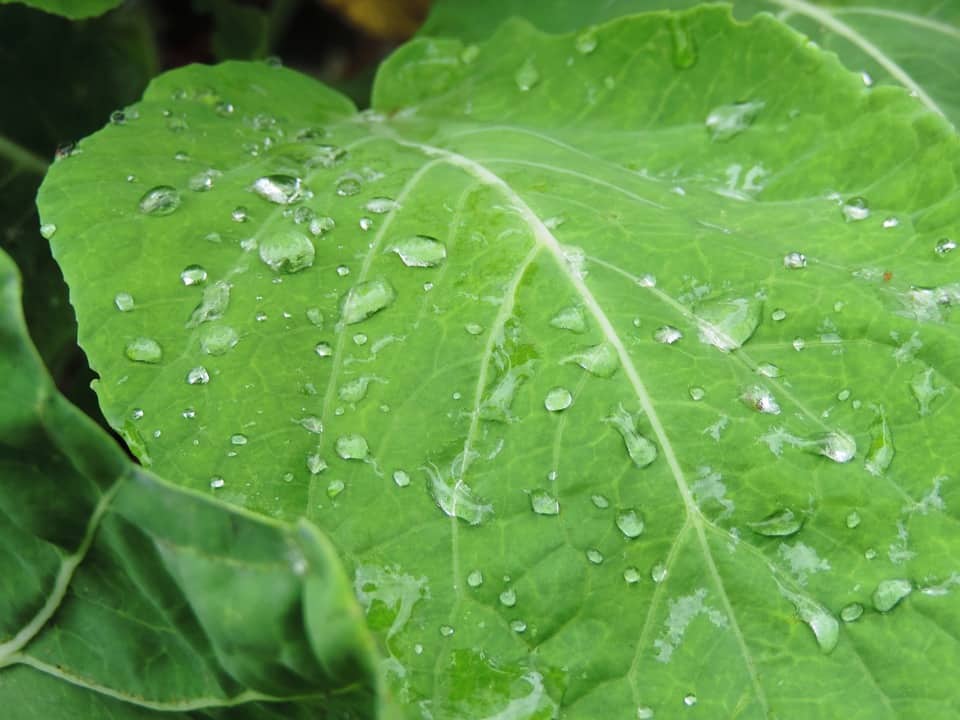
Space utilization: Kale doesn’t take up much space, and the yields are high.
Monetary value: Regarding the monetary value, kale has a high return on investment, making it one of the most high value vegetables.
Nutrition: Kale is undisputedly one of the high-value vegetables. It’s known to be one of the most nutrient-dense veggies in existence. Kale is rich in about 33 calories, carbs, fiber, and some proteins.
This vegetable also contains beneficial quantities of vitamins A, C, and K, B1 (Thiamin), B2 (Riboflavin), B3 (Niacin), and B6, manganese, calcium, copper, potassium, and magnesium.
Finally, kale is also a good source of antioxidants such as Kaempferol and Quercetin (Source: authoritynutrition.com)
24. Okra (Overall score 5.7)
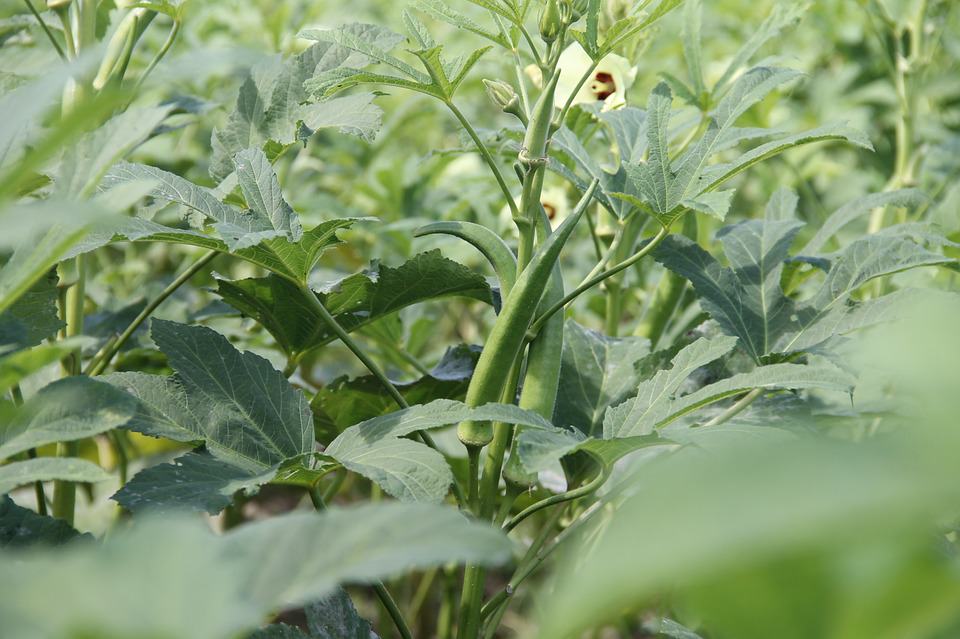
Space utilization: Good
Monetary value: Relatively high monetary value
Nutrition: The okra, also called ‘lady’s finger,’ is full of nutritional benefits. Amongst them, okra contains high amounts of vitamins C, A, K, and folate.
That’s not all.
This finger-like vegetable is also a good source of vitamins B1, B3, and B6. Also, okra contains vital nutrients such as magnesium, manganese, beta-carotene, lutein, and zeaxanthin. (Source: naturalsociety.com)
23. Collards (Overall score 5.8)
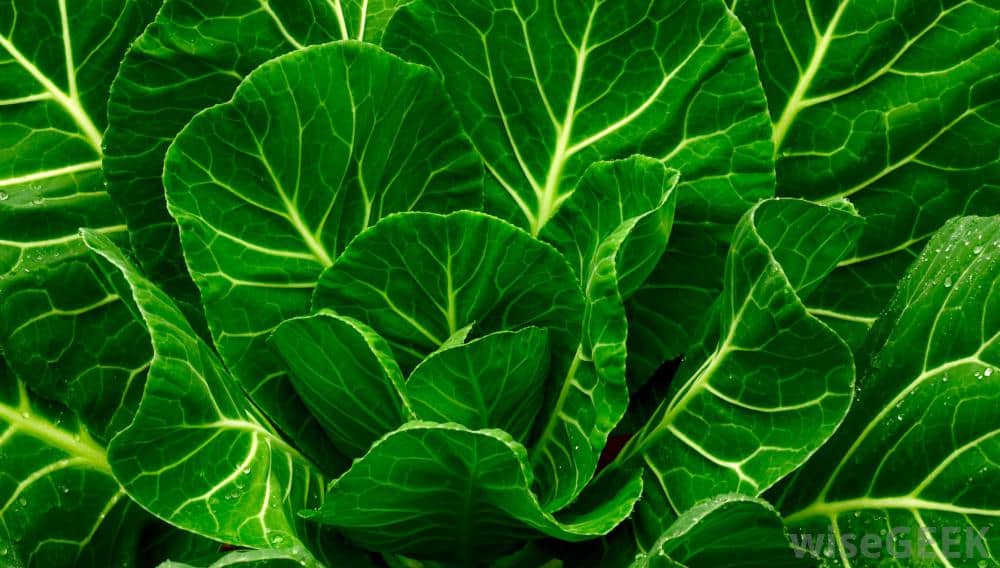
Space utilization: Collards are large growing leafy vegetables. This means that they take up a bit of space.
Monetary value: This great vegetable has a medium market value.
Nutrition: Collards provide enormous amounts of food and contain little to no calories. It’s a tremendous source of vitamins A and K, folate, manganese, calcium, and tryptophan. (Source: fullcircle.com)
22. Leeks (Overall score 5.9)
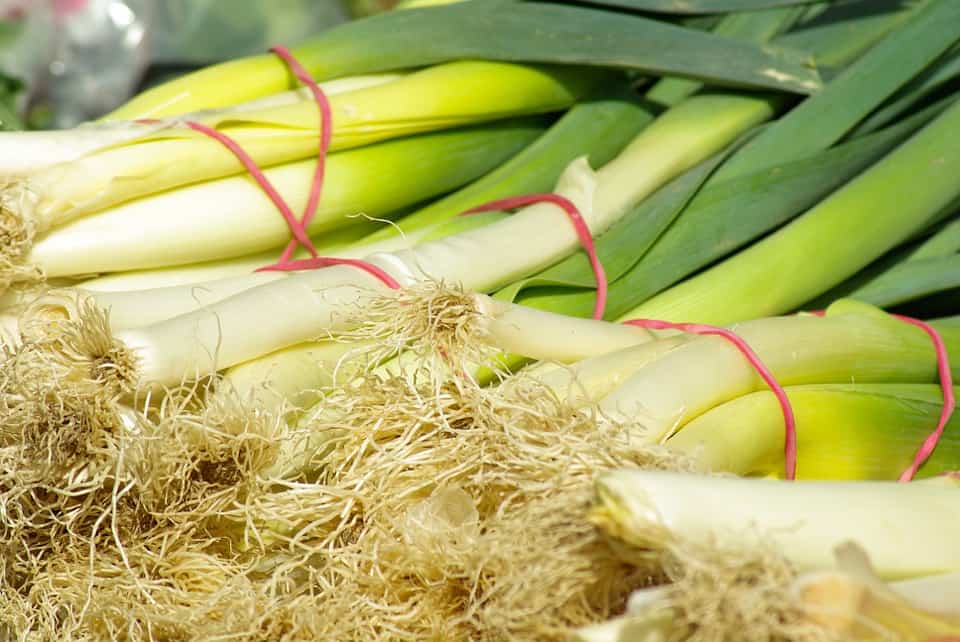
Space utilization: Leeks are onion family members and take up a relatively smaller space to grow. This makes them ideal for growing in containers.
Monetary value: They have a medium market value, but it depends on the growing regions.
Nutrition: Leeks are an excellent source of several vitamins and minerals, including vitamins A, B6, C, K, calcium, magnesium, iron, and manganese.
Multiple studies also indicate that leeks contain anti-cancerous properties such as allyl sulfides.
21. Cabbage (Overall score 6.0)
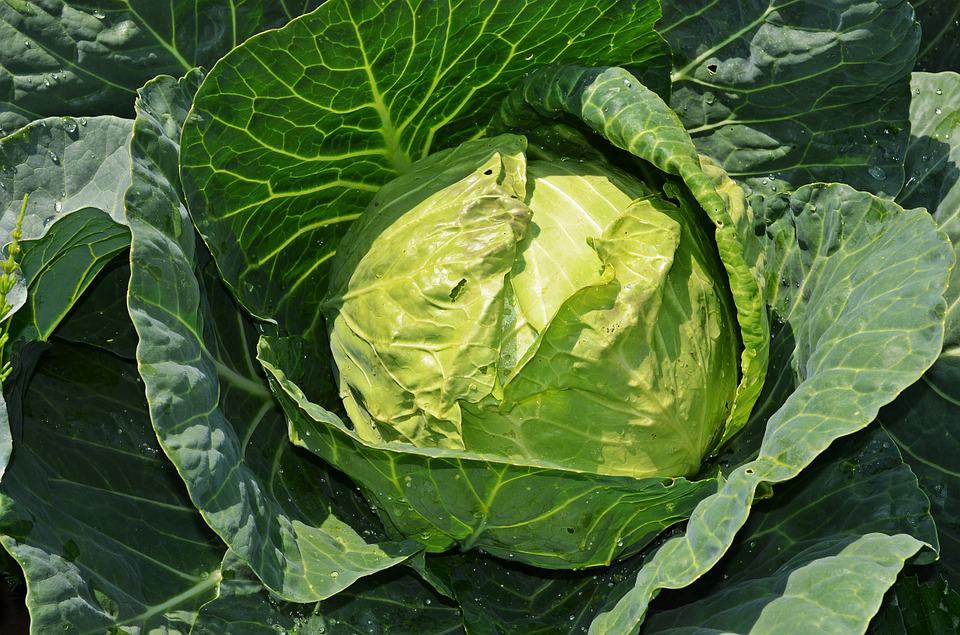
Space utilization: Cabbage is one of the most popular vegetables, with a relatively small production per unit area. A 10-foot row will take a maximum of up to 8 plants, yielding 10-15 lbs per square foot.
Monetary: Despite its popularity, the cabbage has little relative monetary value. They are featured on this list exclusively because of yield per square unit.
Nutrition: Cabbage is a member of cruciferous vegetables that is relatively low in calories, carbohydrates, fiber, and protein and zero in fat and cholesterol. It is also rich in vitamins C, K, B6, and folate. Regarding minerals, the cabbage is low in sodium and rich in iron and calcium. (Source: livestrong.com)
20. Radishes (Overall score 6.1)
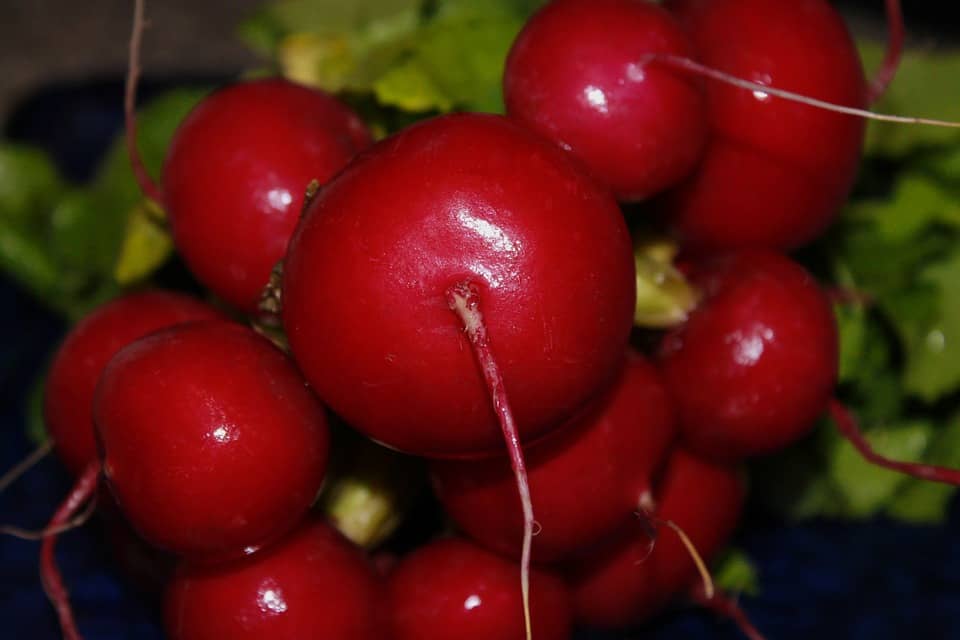
Space utilization: Radishes are economical regarding space utilization. They produce high yields of up to 3 lbs per square foot. In a 10-foot row, 100-120 plants can be accommodated perfectly well.
Monetary value: Radishes have a medium value.
Nutrition: Radishes are a rich source of vitamin C (approximated at 25% of the daily recommended value).
They also contain folate, fiber, riboflavin, potassium, and valuable amounts of vitamin B6, magnesium, copper, manganese, and calcium. (Source: foodfacts.mercola.com)
19. Beans, Lima (Pole-type) – Overall score 6.1
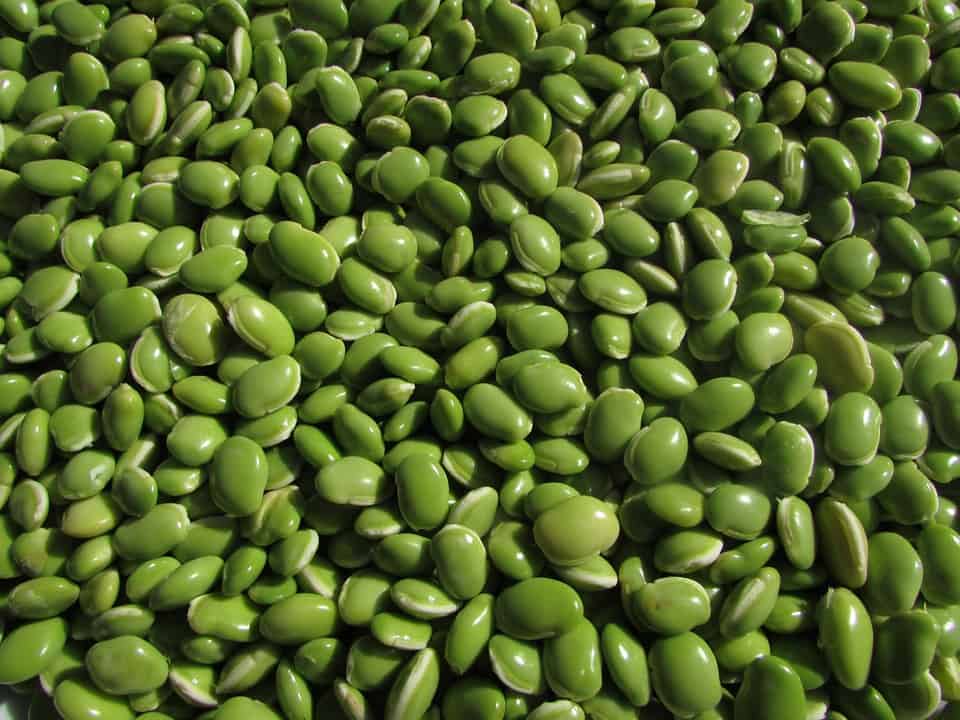
Space utilization: Good
Monetary value: Highly valuable.
Nutrition: The primary focus here is the green lima beans, which contain plenty of calories and macronutrients.
These beans contain carbohydrates, dietary fiber, low fat, omega-3 Fatty Acids, Omega-6 Fatty Acids, proteins, and zero cholesterol.
Other vital nutrients are pro-vitamin A, C, E, K, B6, B12, Thiamin, Riboflavin, Niacin, and Folate. (Source: healwithfood.org)
18. Mustard greens (Overall score 6.2)
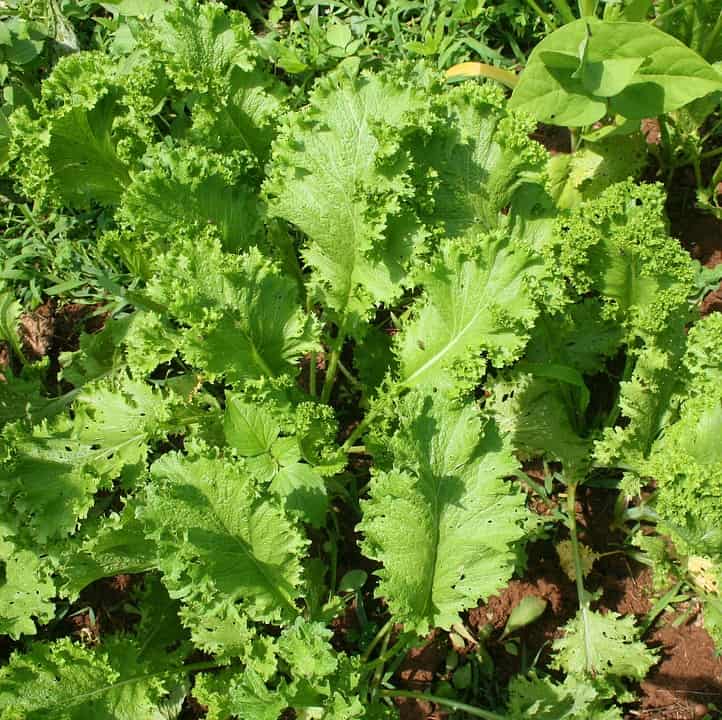
Space utilization: Good.
Monetary value: Medium to high value vegetables.
Nutrition: This superfood is undoubtedly loaded with disease-fighting nutrition, rich in flavor, and light in calories. It also has outstanding amounts of vitamin K, A, C, and folate.
Mustard greens also contain essential minerals such as manganese, calcium, potassium, vitamins E, B6, phosphorous, and copper. (Source: draxe.com)
17. Spinach (Overall score 6.2)
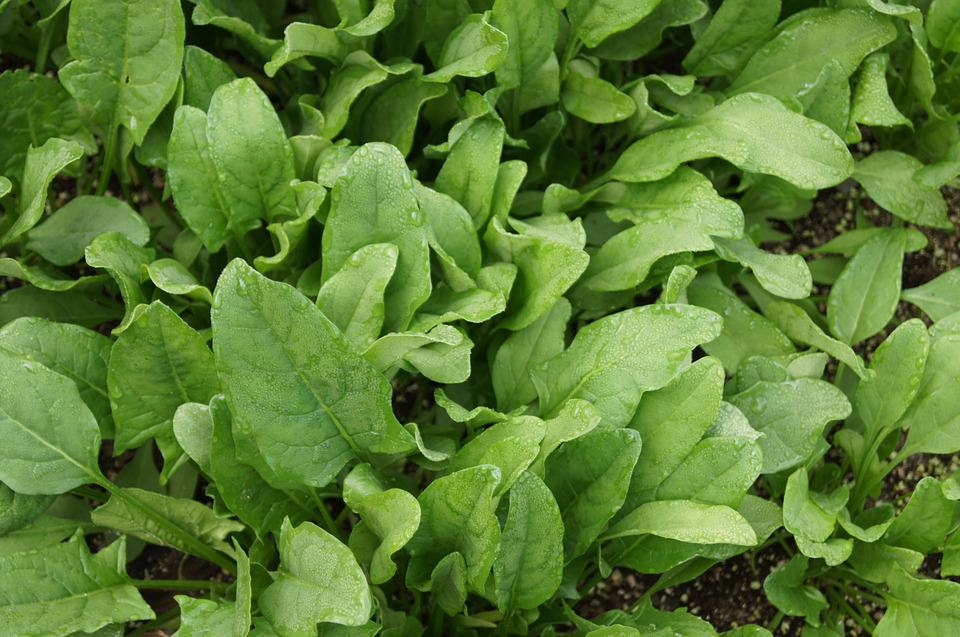
Space utilization: The spinach utilizes spaces efficiently with medium yields of up to 5 lbs per square foot.
Monetary value: It has a relatively intermediate market value.
Nutrition: The spinach is the only vegetable that will give you enormous strength. It’s dense in vitamins and minerals and low in calories. Spinaches are an excellent source of vitamins K, B2, B6, A, E, C, folate, manganese, copper, and calcium.
The spinach has been voted as one of the world’s healthiest foods. (Source: livescience.com)
16. Broccoli (Overall score 6.3)
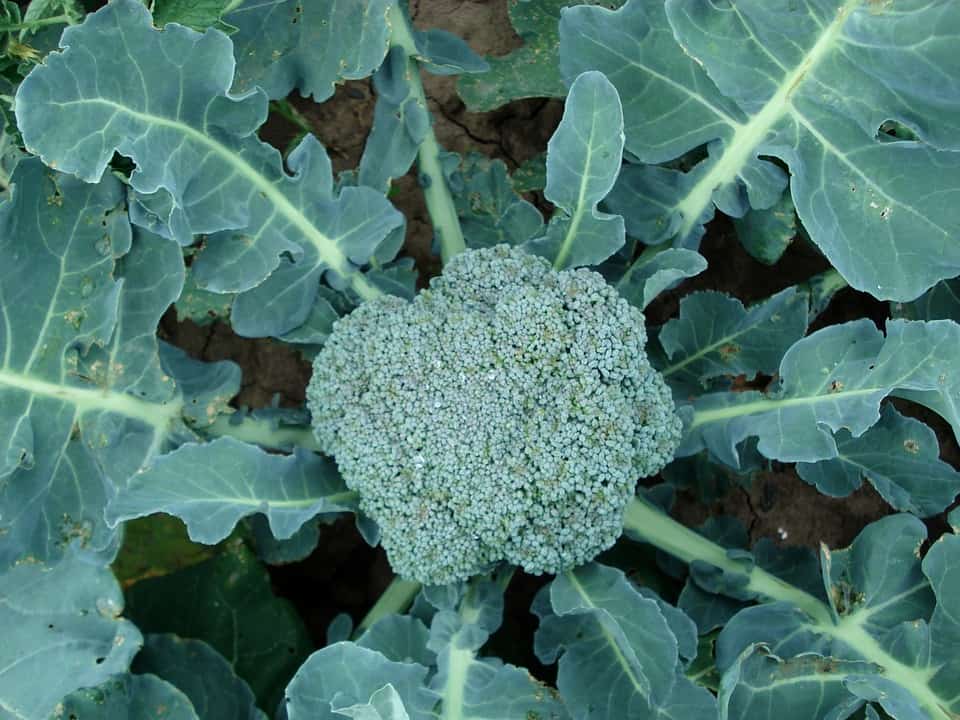
Space utilization: Broccoli utilizes even the smallest of space. For instance, a 10-foot row accommodates ten plants, and production varies between 10 and 12 lbs per square foot, which is relatively higher.
Monetary value: To top it off, this is considered one of the high value vegetables and, therefore, has a high monetary value.
Nutrition: Broccoli has a great flavor and is rich in health benefits. It is low in calories and rich in essential vitamins, fiber, and minerals. The vital minerals and vitamins are vitamins C, K, fiber, potassium, and folate. (Source: healthyeating.org)
15. Kohlrabi (Overall score 6.3)
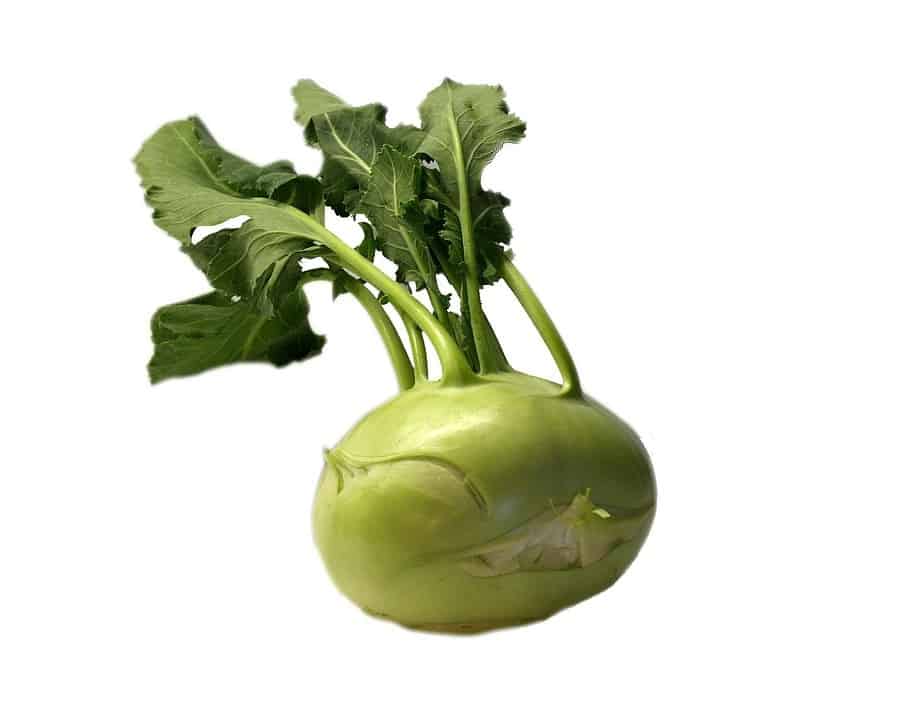
Space utilization: A medium producer yielding about 8 lbs per square foot. Doesn’t take up much space – 10 ft. A row can grow 30 plants.
Monetary value: Kohlrabi is not very popular and has a medium monetary value.
Nutrition: Kohlrabi is a hardy annual vegetable full of nutrients and minerals. It contains antioxidant compounds such as carotenes and phytochemicals. You can find more health benefits of Kohlrabi here. (Source: organicfacts.net)
14. Swiss chard (Overall score 6.3)
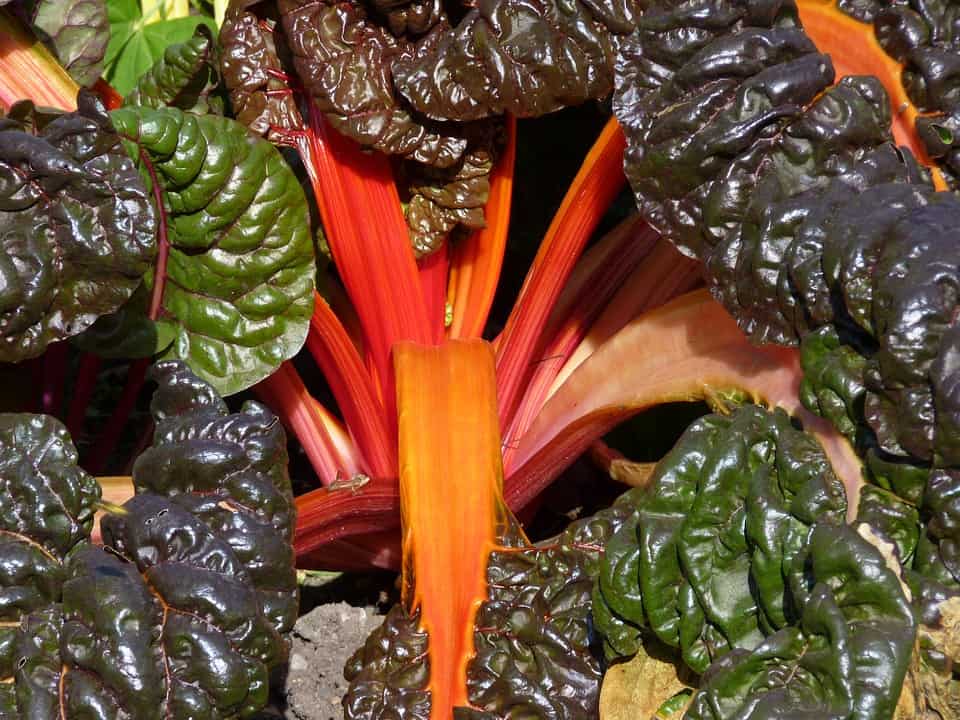
Space utilization: Magnificent. It can be grown in containers but performs best in raised beds.
Monetary value: Swiss chard has a relatively high monetary value.
Nutrition: Apparently, Swiss chards are among the heavy vitamin-laden veggies on earth. They contain polyphenol antioxidants and Betalains. They also include a high amount of vitamins K, C, and A (Source: canadianliving.com).
13. Sweet peppers (Overall score 6.4)
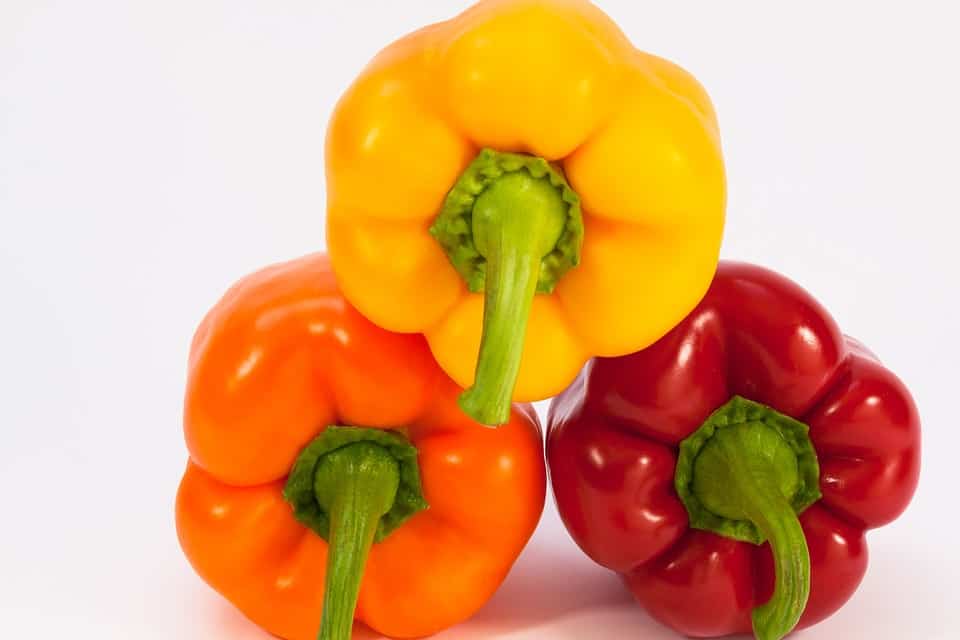
Space utilization: Fairly good.
Monetary value: Peppers are super expensive in some regions, meaning they have a relatively high monetary value.
Nutrition: Sweet peppers are excellent suppliers of the daily required vitamin C. They are also an excellent source of vitamins A, B6, and magnesium. Armored with lycopene that gives them their characteristic red color, sweet peppers are potent antioxidants. (Source: chatelaine.com)
Read: 15 Types of Pepper Plants to Grow in Your Garden
12. Cucumbers, grown on support (Overall score6.5)
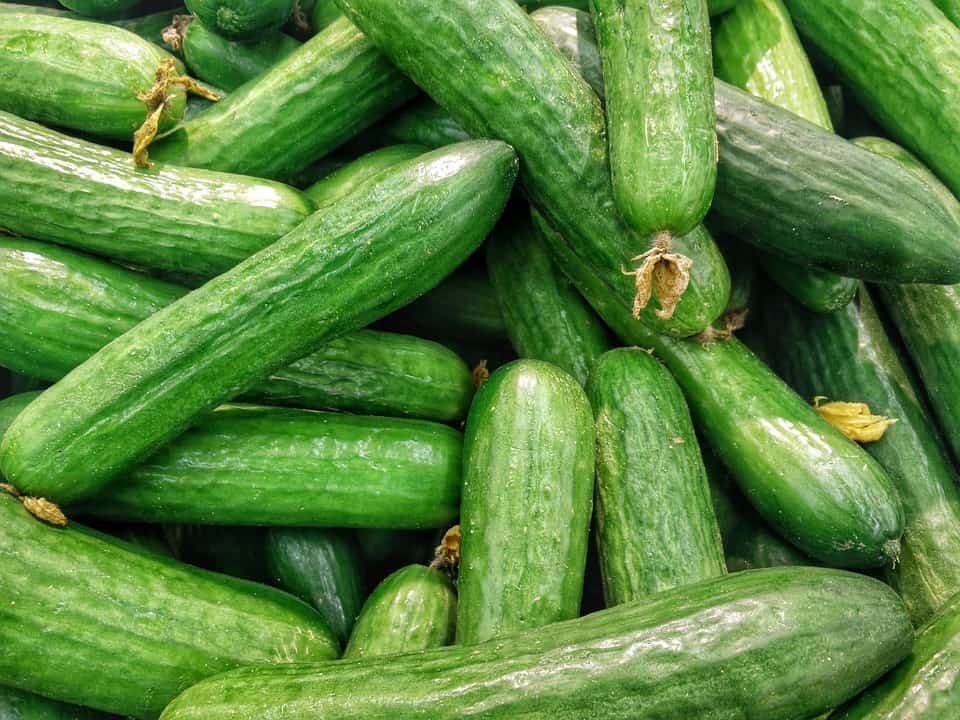
Space utilization: The cucumber yields about 2-3doz per square foot. A 10 ft-row will accommodate five plants, and they take up much less space, especially when supported. Learn how to grow a tonne of cucumbers in pots.
Monetary value: They have a high monetary value due to their practical uses.
Nutrition: This is what to expect from the cucumbers: a Source of vital vitamins, rehydrating the body, caring for the skin and hair, relieving lousy breath, aiding in weight loss, and curing or curing most diseases. (Source: naturalnews.com)
11. Carrots (Overall score 6.5)

Space utilization: If you don’t have the luxury of owning a larger space but still want to grow vegetables, you might as well think about growing carrots. Here are more ideas for small-space gardening.
Monetary value: The current market value is medium to high for all the carrot cultivars.
Nutrition: Carrots are the leading source of beta-carotene. It also contains the vitamins B, C, D, E, and K.
Besides these vitamins, carrots also supply minerals such as calcium, phosphorus, sodium, potassium, and traces of other minerals. Trace amounts of proteins can also be found in carrots. (Source: goaskalice.columbia.edu)
10. Beans, bush (Overall score 6.5)
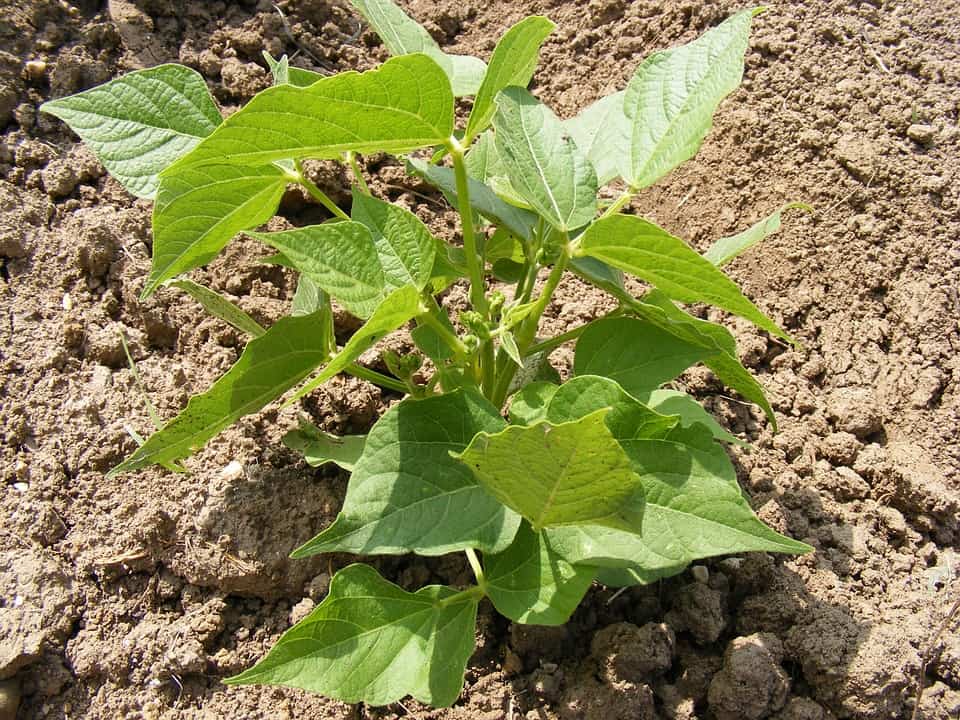
Space utilization: Good.
Monetary value: High.
Nutrition: These beans are loaded with plenty of calories and macronutrients. These beans contain carbohydrates, dietary fiber, low fat, omega-3 Fatty Acids, Omega-6 Fatty Acids, proteins, and zero cholesterol. Other vital nutrients are pro-vitamin A, C, E, K, B6, B12, Thiamin, Riboflavin, Niacin, and Folate. (Source: healwithfood.org)
9. Beets, for greens and roots (Overall score 6.6)
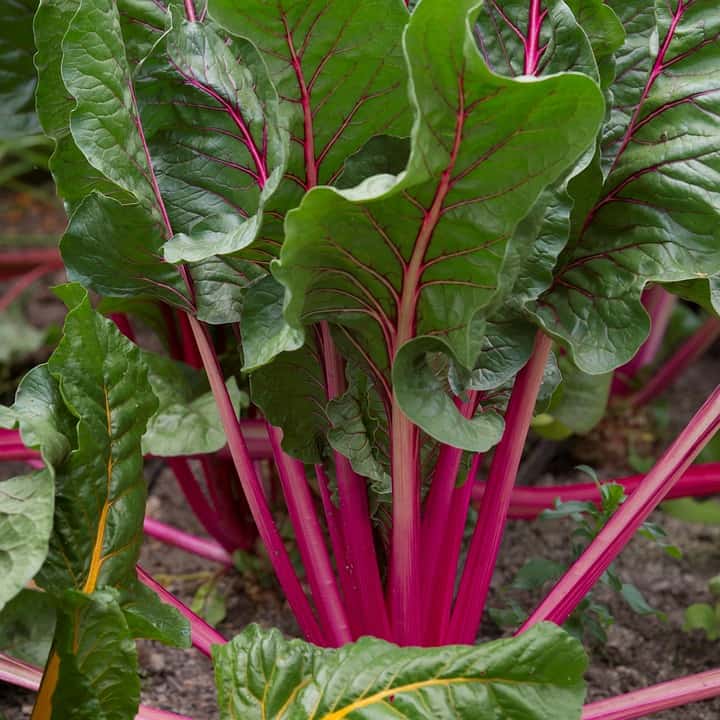
Space utilization: High.
Monetary value: Medium.
Nutrition: The beet is an excellent source of phytonutrients, folate, manganese, potassium, copper, fiber, magnesium, phosphorous, iron, vitamin C, and B6. This veggie is one of the high-value vegetables that promotes optimal health. (Source: whfoods.com)
8. Beans, pole (Overall score 6.8)
Space utilization: Excellent
Monetary value: Highly valuable (One of the most expensive vegetables to buy or sell).
Nutrition: These beans are loaded with plenty of calories and macronutrients.
These beans contain carbohydrates, dietary fiber, low fat, omega-3 Fatty Acids, Omega-6 Fatty Acids, proteins, and zero cholesterol.
Other vital nutrients are pro-vitamin A, C, E, K, B6, B12, Thiamin, Riboflavin, Niacin, and Folate. (Source: healwithfood.org)
7. Peas, edible-podded (Overall score 6.9)
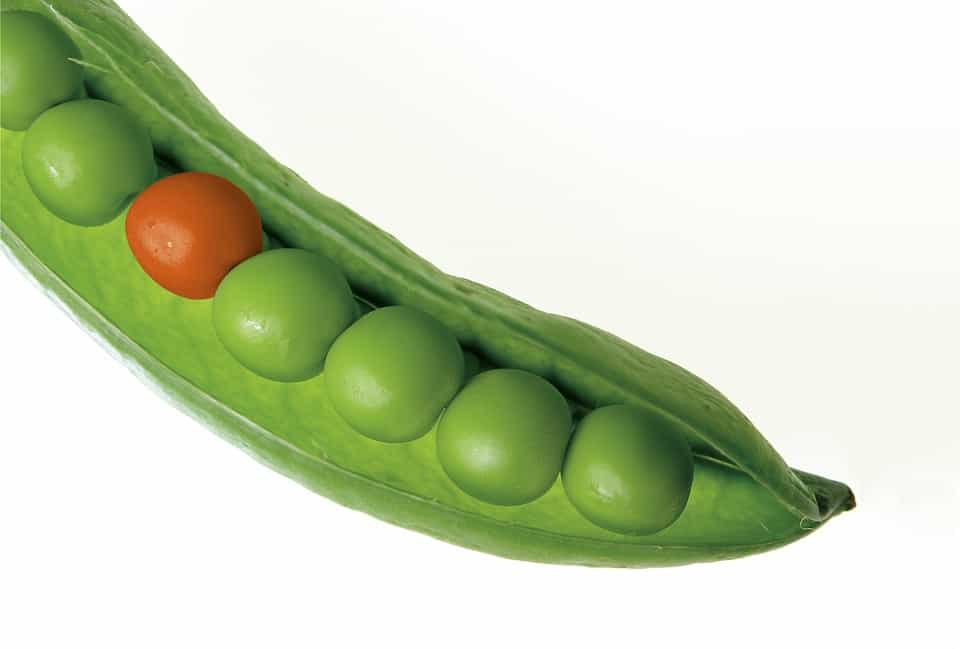
Space utilization: Efficient.
Monetary value: High
Nutrition: Peas are green legumes loaded with vitamins A, B1, B6, K, and C. These super vegetables are high in fiber and low in fat, and contain no cholesterol.
Furthermore, they are a good source of vegetable proteins. (Source: webmd.com)
6. Onions, bulbs for storage (overall score 6.9)
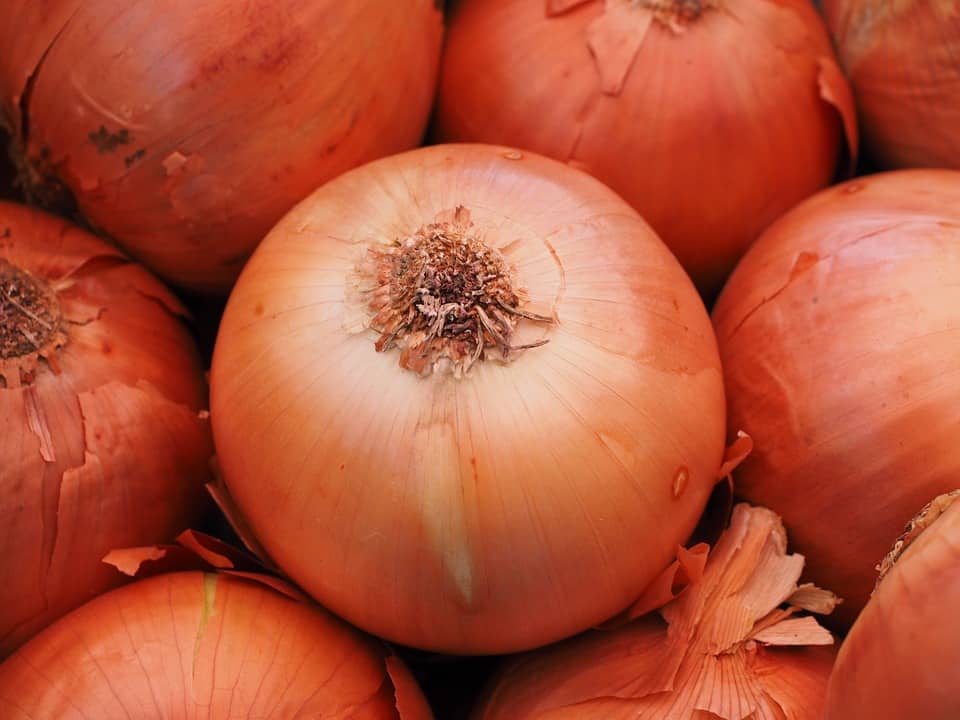
Space utilization: Bulb onions are medium producers. In practice, a 10-foot row will accommodate about 40 plants, yielding up to 10 lbs per square foot. It’s good to note that bulb onions have the best storage capabilities.
Monetary value: Unfortunately, bulb onions are considered relatively low in value when it comes to the dollar value.
Nutrition: Bulb onions contain essential compounds such as polyphenols, flavonoids, and sulfur-containing compounds.
It’s proven that flavonoids are more concentrated in the outer layers of the bulbs. The onions contain biotin, manganese, copper, vitamins B6, C, B1, fiber, phosphorus, potassium, and folate.
Several studies show that when onions are consumed in a diet rich in other vegetables and fruits, they can protect the heart and blood vessels.
It can also lower the risk of several cancers (source: whfoods.com)
5. Summer squash (Overall score 7.2)
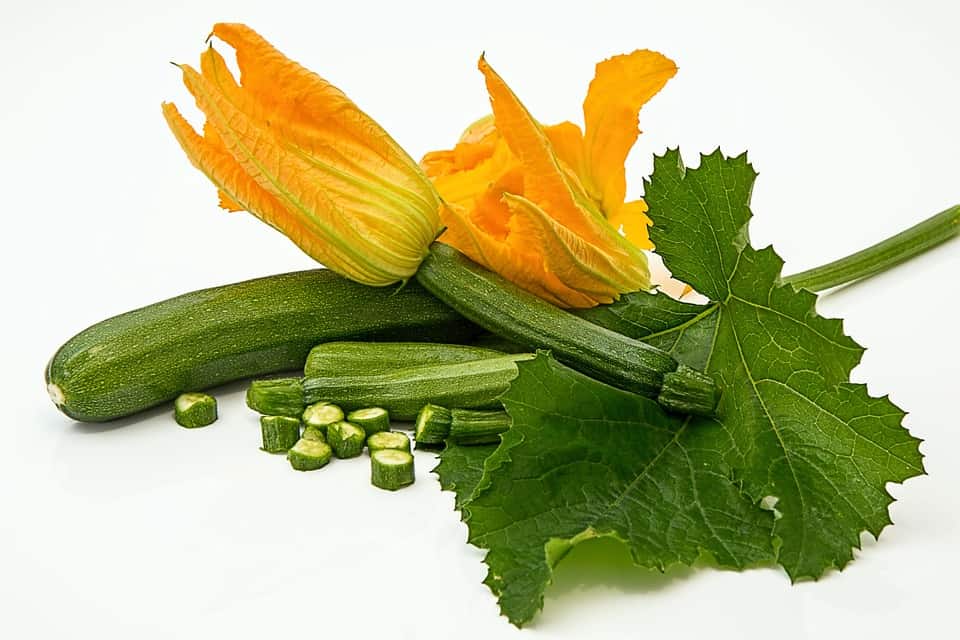
Space utilization: Three summer squash plants can produce 25 lbs per square foot.
Monetary value: High and quite expensive
Nutrition: This squash provides adequate dietary fiber and significant amounts of vitamin B6, potassium, and folate. The winter squash is also rich in phytonutrients and antioxidants.
Furthermore, the squash contains essential nutrient components such as carotenoids, high levels of beta-carotene, and vitamin C. (Source: wholeliving.com)
4. Turnips (greens and roots) - Overall score 7.4
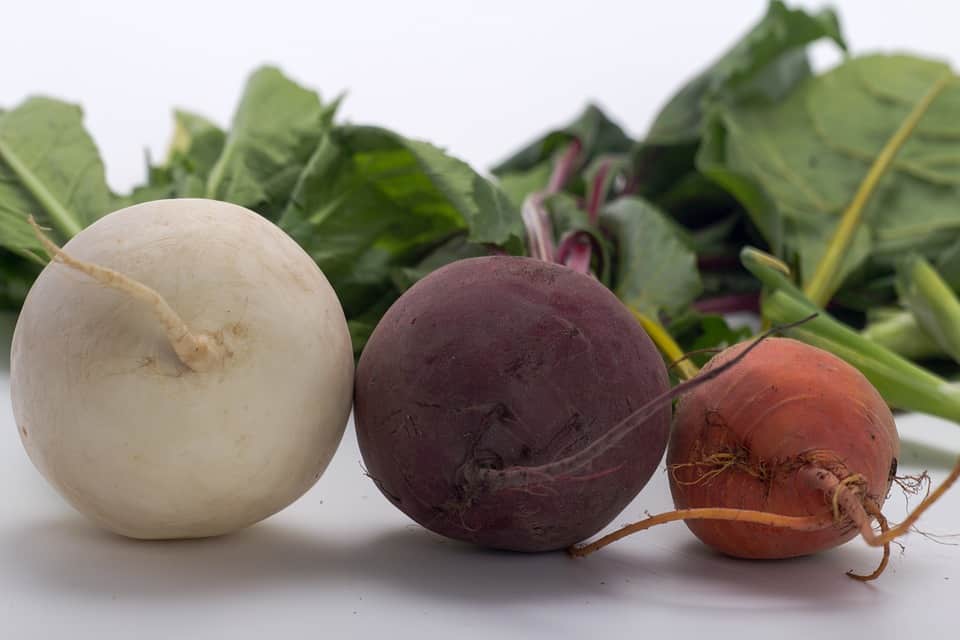
Space utilization: The turnip is a high-producing crop that gives 20 lbs per square foot. In a ten-foot row, 30-40 plants can be planted.
Monetary value: Medium.
Nutrition: They are a good source of phytonutrients such as indole-3-carbinol, sulforaphane, and isothiocyanates. Turnips comprise carbohydrates, proteins, fats, minerals, and vitamins.
These vitamins are thiamine, niacin, B6, C, and riboflavin.
The principal minerals in the turnip are sodium, potassium, calcium, phosphorous, iron, selenium, magnesium, copper, and zinc. (Source: healthyeating.sfgate.com)
3. Leaf lettuce (Overall score 7.4)
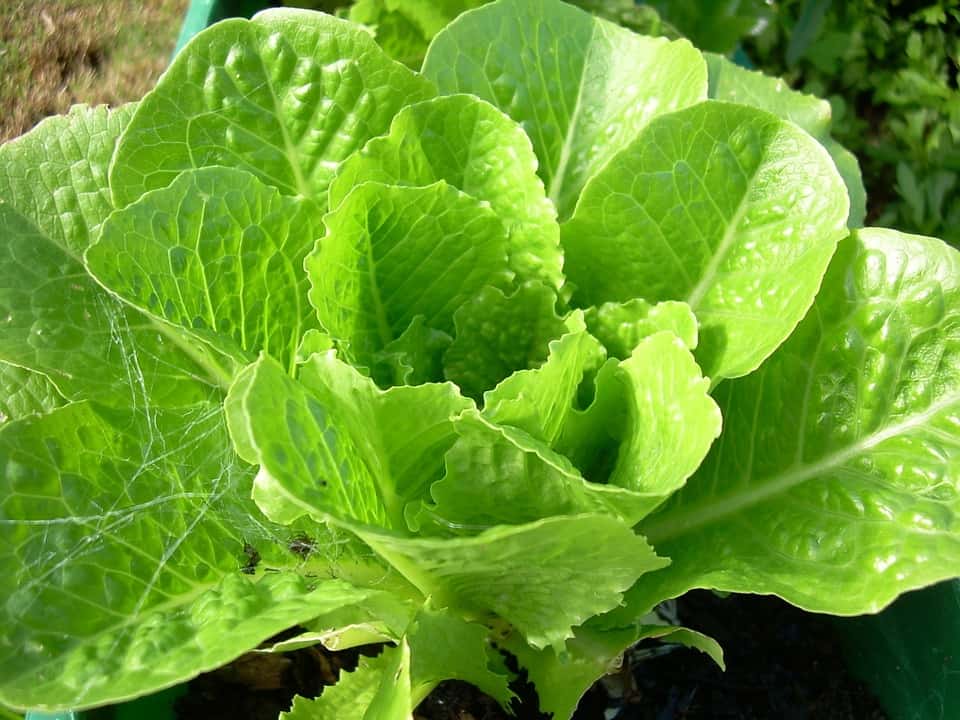
Space utilization: Lettuce is an efficient space user. A 10-foot row can accommodate 30-60 plants and yields about 5 lbs, which makes it a medium producer.
Monetary value: Leaf Lettuce is considered to have a relatively high monetary value.
Nutrition: The Lettuce is a darling for most salad fans. It’s one of the very low-calorie (0.15 calories per gram) and low in cholesterol vegetables.
This vegetable has folates, zea–xanthin, thiamine, and vitamins K, C, and B6.
Lettuce further contains some pretty essential minerals such as iron, calcium, magnesium, and potassium (Source including recipes visit: nutrition-and-you.com)
2. Onions, green bunching (Overall score 8)
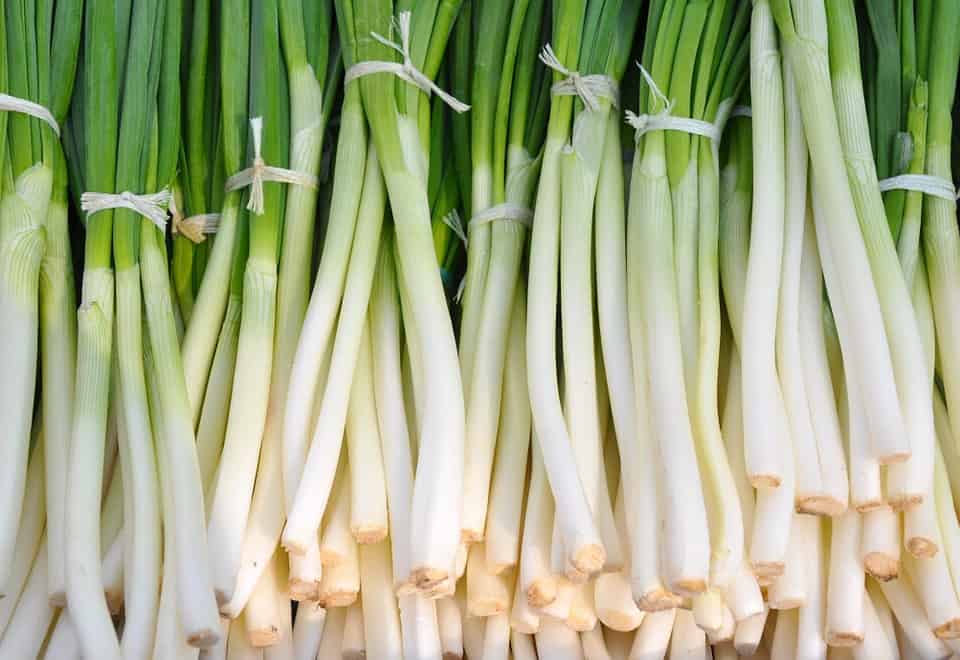
Space utilization: Green bunching onions are space-friendly, meaning they won’t take much space, but you can expect high yields. A 10 ft row will accommodate 60-80 plants.
Monetary value: It’s also good to note that these onions are poor in storage than the bulbs. Green onions have a higher economic value.
Nutrition: Rich in vitamins, antioxidants, and nutrients.
They are also rich in the powerful sulfur-containing compound called allyl sulfide, which is responsible for reducing the risk of developing colon cancer. (Source: thehealthsite.com)
1. Tomatoes, grown on support (Overall score 9)
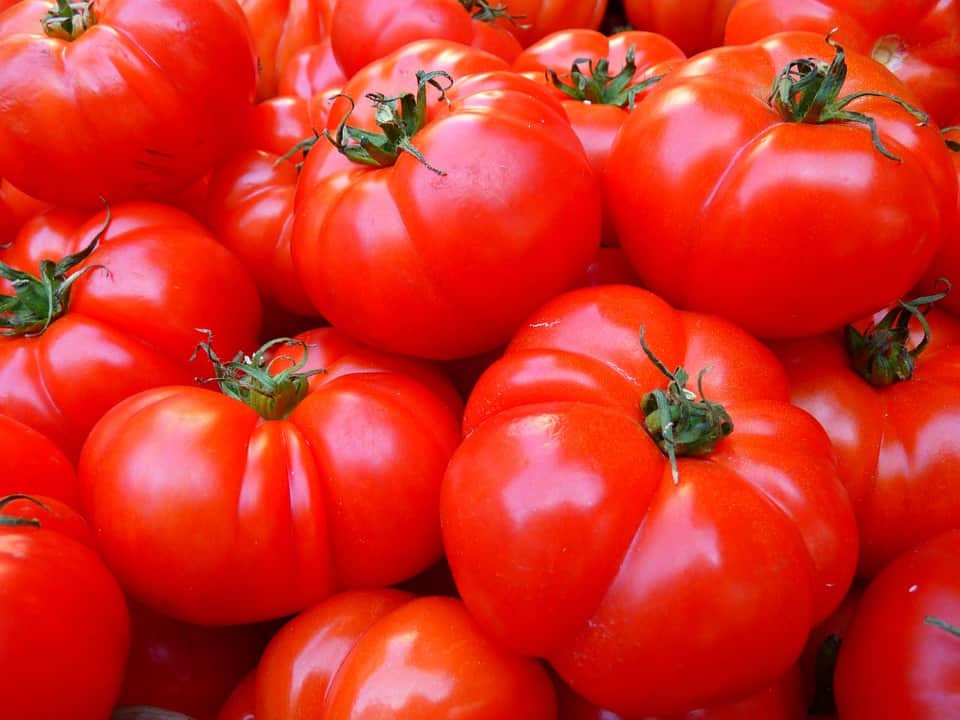
Space utilization: It is possible to grow about eight tomato plants per 10-foot row and expect medium yields between 30-50lbs of produce.
Monetary value: Tomatoes have a relatively high monetary value
Nutrition: Tomatoes (red, ripe, raw) are a good source of Thiamine, Niacin, Vitamin B6, Folate, Magnesium, Phosphorus, Copper, and Vitamin E (alpha-tocopherol).
They are also a concentrated source of dietary fiber, Vitamin C, Vitamin A, Vitamin K, Manganese, and Potassium.
As if to spice up everything more, tomatoes are low in sodium, saturated fat, cholesterol, and 112KJ calories. It’s even believed that this vegetable is anti-cancerous and prevents many lifestyle diseases if consumed fresh (Source: nutritiondata.self.com).
No wonder tomato takes the number one spot when it comes to high value vegetables, winding up this list of the most expensive vegetables that will undoubtedly profit you both in the short and long run.
Read: Best Soil For Tomatoes In Pots And Raised Beds
Conclusion
If you’ve come to this point, it shows that you already have an ingredient for successful vegetable gardening.
I believe this post has suggested the vegetables you need to start your successful vegetable garden.
Don’t forget that this post is part of my series on A To Z vegetable gardening tips for beginners.
If you’ve found this list of high value vegetables beneficial, please share it. As always, let me know what you think in the comments.
Editor's Note: This post was originally published on January 29, 2016 and has been revamped and updated for accuracy and comprehensiveness.
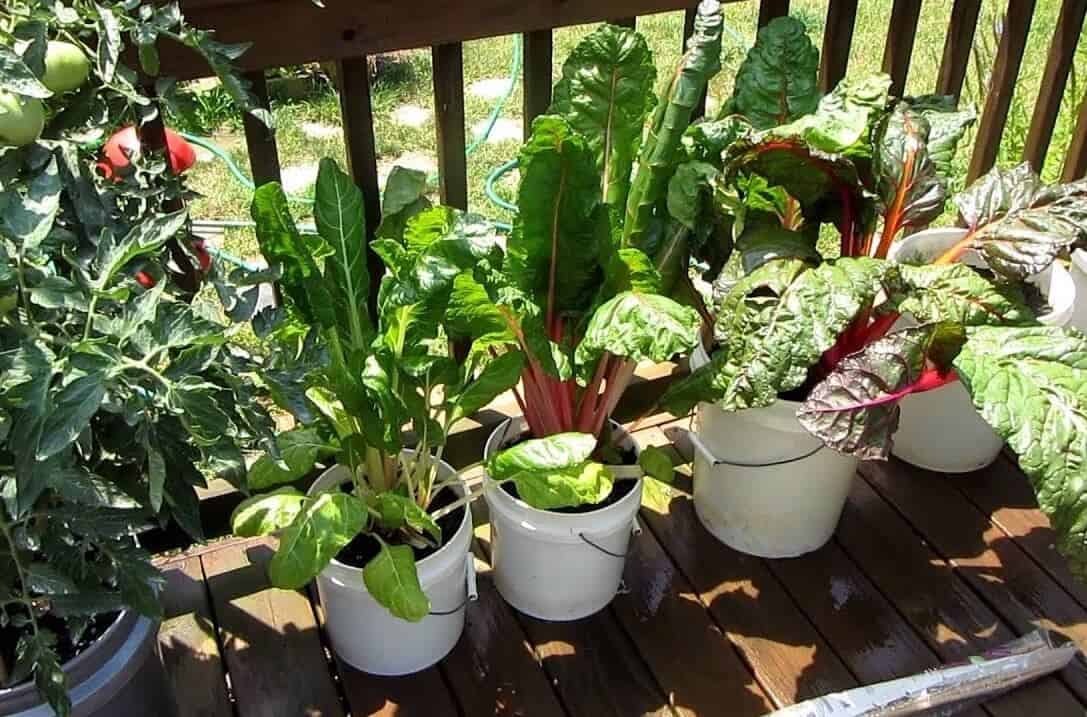
Good . so beneficial. Keep it up